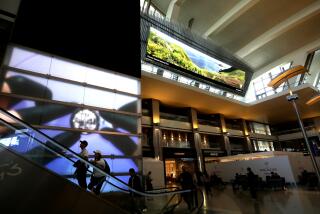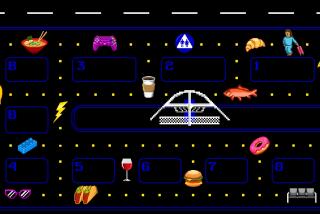JOHN WAYNE AIRPORT : High-Tech Takes Off
The world of aviation has always been a haven for high-tech, but finding it at the old John Wayne Airport wasn’t easy. You got the tiniest taste of it if your car keys set off the red light on the magnetometer, but the walk across the Tarmac to the plane reminded you that there were precious few machines to help run the place.
Now, however, the airport bristles with computerized gadgets.
If you arrive in a commercial vehicle, such as a courtesy limousine or a shuttle bus, it will have a small transponder attached to its roof. When it passes beneath the upper level roadway, an antenna set in the overhead will send a signal to the transponder, which will echo it back. That signal is recorded by a computer, and the vehicle’s company is billed an access fee.
If you drive yourself, you no longer need to wait in a line of cars to pay your parking fee on the way out. Inside the terminal are four automated pay stations--two in the baggage carousel area on the lower level and two on the upper departure level--where you insert your parking ticket and money. The machines give change and allow a 30-minute grace period for you to insert the validated ticket into a slot at the parking lot exit and be on your way.
Flight information is displayed on computerized digital message boards that hang above every departure gate. Two similar, but larger, multipurpose message boards hang in the heavily trafficked area in the middle of the terminal near the security checkpoints. The boards are operated from a central control room that also houses the electronics that run the security and fire control systems.
The terminal, parking garages and the overhead of the upper level roadway are fitted with sprinklers, heat sensors and smoke detectors. Small lamps spaced along the terminal walls and in restrooms will light to warn deaf people of a fire.
Many of the mechanical and electrical operations in the terminal can be shut down automatically from the central control room in case of fire.
That room also contains the mechanism that controls the master paging system, which is linked to a series of white courtesy telephones spaced throughout the terminal.
When passengers fly the Boeing 757 (and, in the future, the 767), they may experience what are perhaps the highest high-tech gadgets of all. Both planes are equipped with digital flight decks that can be programmed with compass headings, altitudes and air speeds by pilots. The planes literally fly themselves, and on-board computers indicate the best air routes to use for greatest fuel economy.
When John Wayne Airport installs the necessary ground-based instruments (no date for this has been set), these planes will be able to land themselves, hands-off, by locking onto a signal from the ground.
The only actual stick-and-rudder work the pilots will have to do, said a Boeing spokesperson, involves taxiing the aircraft on the ground.
More to Read
Sign up for The Wild
We’ll help you find the best places to hike, bike and run, as well as the perfect silent spots for meditation and yoga.
You may occasionally receive promotional content from the Los Angeles Times.






